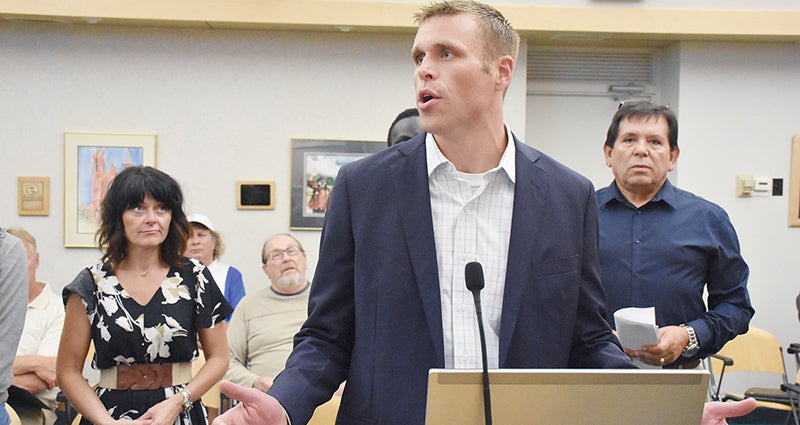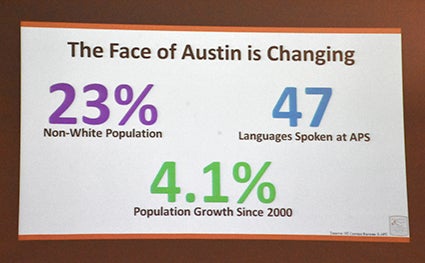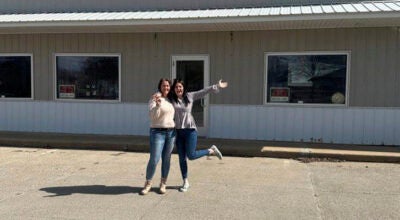Austin Human Rights Commission releases ‘welcoming report’; Report based on six-month long survey
Published 9:10 am Wednesday, July 19, 2017

- Austin Human Rights Commission Chariman Jason Baskin (front) presented the findings of the AHRC’s “Welcoming Report” to the CIty Council Monday evening. Mike Stoll/mike.stoll@austindailyherald.com
The Austin Human Rights Commission has concluded its study on making Austin a more welcoming city. AHRC Chairman Jason Baskin presented the findings of the six-month long community survey to the City Council during the council meeting Monday evening.
“Austin’s future success depends on maximizing the potential of all residents,” Baskin said.
While conducting the survey, the AHRC spoke to both members of the immigrant community and people who have lived in Austin for many years as a means to get a good representative sample of the city.
The report covered what was working in Austin’s favor and what barriers still existed to making Austin a welcoming city. The report noted two major advantages working for Austin:

Statistics reported by the Austin Human Rights Commission. Mike Stoll/mike.stoll@austindailyherald.com
•Diversity already exists – Austin’s non-white population is 23 percent, up from two percent in 1990.
•Key stakeholders are embracing diversity – the city government, schools, employers and non-profits have expressed support and taken actions to make Austin a welcoming city.
According to the report, there are still significant barriers to overcome:
•Lack of interaction between groups – Although the city has many different communities, it was found that several primarily interact superficially or not at all with others. Baskin called this the biggest barrier, saying, “The more interaction we get, the more people are going to generate common interests and the more that they have will make the other barriers look more surmountable at that point.”
•Communication – Not speaking certain languages and a lack of informal intersecting communication networks makes establishing trust difficult.
•Leadership development – It is not uncommon in newcomer communities to rely on a few individuals as leaders, particularly when they don’t see community leaders that look like them.
•Transportation – Austin is primarily designed for car travel, which may prove difficult to immigrants/refugees that do not own a car or other modes of transportation, thus affecting job opportunities and access to necessities.
•Housing – Apartment and rental housing is scarce in Austin, which makes it difficult for individuals with large families. This also makes it difficult to complain about unsafe housing conditions, as they may be concerned they will have nowhere else to go.
The AHRC suggested that the city should create a Strategic Welcoming Plan by the end of 2018 and work to increase the diversity of city commissions, boards and task forces. The AHRC said it would work with community stakeholders to increase exposure between cultures in Austin.
Although barriers still exist, Baskin is optimistic about Austin becoming a welcoming city.
“Our experience and population base is much more different than what we see in a lot of our sister communities,” he said. “We recognized as a community 20 plus years ago that we were seeing a change in demographic, and at that time, Bonnie Reitz and the Council wanted to do things like creating the welcome center to try and solve some of those issues. The early work that those pioneering leaders did set us on a really good path.”
Faces of Austin
•23 percent non-white population
•47 languages spoke at Austin Public Schools
•4.1 percent population growth since 2000
—Numbers released by Austin Human Rights Commission





